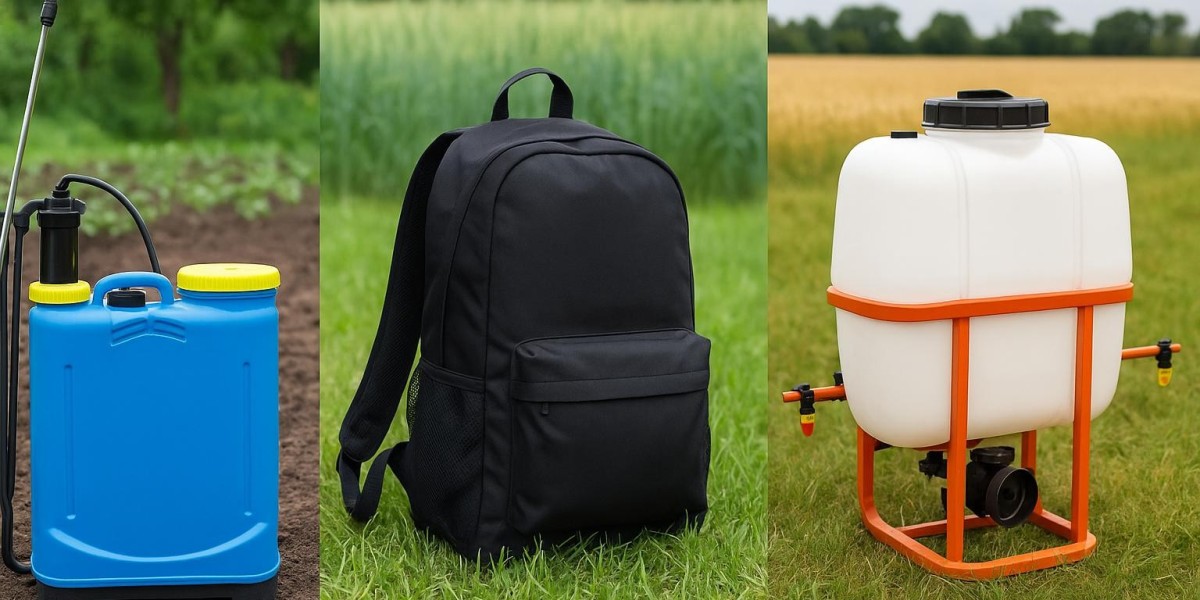Modern agriculture and horticulture depend heavily on chemical treatments—pesticides, herbicides, fungicides—to ensure yield and protect crops. But as chemical use increases, so does the risk to those applying them. Farm workers, gardeners, and even nearby residents can face short-term exposure symptoms like dizziness or nausea, and long-term issues such as respiratory problems or skin disorders. The answer isn’t always to cut chemicals completely, but to handle them more safely. That’s where mist sprayers come in.
Mist sprayers are changing the way we work with chemicals in farming, particularly in agricultural contexts. In addition to being practical, their accuracy, effectiveness, and capacity to lessen drift are vital for both health and safety. This blog examines the ways in which mist sprayers greatly reduce direct chemical contact and how to utilize them effectively without sacrificing efficiency.
The Problem with Conventional Spraying
Widespread chemical dispersal is frequently the result of traditional spraying techniques, particularly backpack and broadcast sprayers. This entails increased danger, contact, and drift. Indeed, research indicates that more than 30% of chemical sprays used with outdated methods never make it to the desired area. Rather, they hover in midair, land on accidental plants, or worse, come into touch with clothing or skin.
Overuse brought on by this inefficiency can stress the environment and contaminate local water sources. However, the risks are immediate and personal for the individual using the sprayer.
Poor nozzle design, lack of directional control, and inconsistent droplet size all contribute to the problem. It’s not just outdated—it’s dangerous.
How Mist Sprayers Work Differently
Mist sprayers are engineered for atomization—turning liquids into fine particles. These particles are light enough to drift into crevices, undersides of leaves, and dense foliage, but not so fine that they remain airborne indefinitely.
This atomized mist uses less liquid volume overall and ensures more even distribution across surfaces. That precision translates into several tangible benefits:
- Less chemical exposure to the operator due to focused spray.
- Reduced overspray, meaning fewer chemicals wasted or drifting onto unintended areas.
Unlike conventional sprayers that saturate with large droplets, mist sprayers operate with micron-level control. This minimizes runoff, splashback, and skin contact.
In the early stages of any spraying strategy, choosing the right equipment is crucial. For anyone looking to start safer, more efficient spraying, the first step is to Buy Mist Blower Sprayers that match your farm size, crop type, and spraying frequency.
Targeted Spraying = Safer Spraying
The idea behind targeted spraying is straightforward: just apply what is required, where it is required. However, without the proper tools, it is more difficult in practice. Broad-spectrum equipment cannot match the precision spraying capabilities of mist sprayers.
They may be adjusted for particular flow rates, spray directions, and chemical concentrations. This adaptability enables foliar nutrient sprays, fungal control on difficult-to-reach leaf undersides, and pest-specific treatments—all with little exposure.
Proper use of mist sprayers also lowers residue accumulation on clothing, which is a major route of indirect exposure. Even with protective gear, mist droplets that linger or bounce back from leaves can contaminate hands, boots, and other exposed areas. With a controlled mist pattern, those risks drop significantly.
"Safety doesn’t happen by accident—it starts with intention and the right tools."
Maintenance, Calibration, and Smart Use
Without maintenance, no tool functions at its peak, and mist sprayers are no different. The goal of a badly maintained sprayer can be defeated if it leaks, clogs, or distributes material unevenly.
After each usage, clean the nozzles and tank. Filters should be changed frequently. Every few months, check for calibration drift and keep nozzles clear. Assuming factory settings are "near enough", many users neglect calibration, but over time, even a 10% variation in droplet size can have an impact on chemical usage and spray pattern.
Additionally, calibration makes sure you're not giving your plants too much or too little. Both may have negative effects: the latter may cause crops to burn or pests to develop resistance, while the former may result in inefficient treatment.
Make sure you’re always adjusting for:
- Crop height and density
- Wind speed and direction
- Chemical type and viscosity
Mist sprayers, when properly used, allow for such adjustments without requiring full replacement of the equipment. That’s part of what makes them a long-term investment for chemical safety.
Where Mist Sprayers Excel Most
Although mist sprayers aren't necessary for every field or crop, there are several circumstances in which their usefulness and safety are unparalleled.
For instance, typical sprayers find it difficult to reach the interior canopy of orchards due to the dense and layered vegetation. These layers are penetrated by mist sprayers without wetting anything. This restricts human exposure, enhances fruit safety, and lessens chemical runoff.
Additionally, vineyards profit, particularly when mildew and insect infestations are treated early in the growing season. Workers can treat just the vines and leave the surrounding areas untreated if they have perfect directional control.
In greenhouses, where enclosed air space magnifies chemical concentration, using mist sprayers prevents saturation while improving ventilation safety. The micron-level control ensures that chemicals stay on plants—not floating in the air waiting to be inhaled.
PPE Isn’t Enough—Mist Sprayers Close the Gap
It is imperative to wear personal protection equipment (PPE) such as respirators, goggles, and gloves. However, they are not infallible. Even with full gear, many field workers continue to report symptoms after spraying.
This is because exposure can occur through mist bounce-back, extended skin contact, or improper chemical mixing, all of which PPE cannot always prevent. By removing the causes, mist sprayers lower these factors.
The Environmental Protection Agency (EPA) lists operator exposure as one of the top health risks in pesticide use. Mitigating this with improved spraying tech like mist blowers is not just a smart move—it’s a necessary one.
Some countries are even offering subsidies or incentives to farms that switch to mist-based spraying systems, recognizing the long-term health savings and reduced environmental toll.
Challenges and Misconceptions
Mist sprayers have a learning curve despite their advantages. Some users raise dosages needlessly because they mistakenly believe that "mist" indicates reduced pharmacological potency. The safety benefits are negated as a result.
Others overlook the fact that, even with tiny particles, wind can still carry mist droplets. Effective, safe spraying depends on directional control, wind shields, and strategic timing (dawn or early morning).
Lastly, price may be an issue. The initial cost of mist sprayers might be higher, particularly for motorised or electrostatic types. However, when you take into account decreased pesticide use, decreased PPE replacement rates, and improved crop health, the return on investment is substantial over time.
Frequently Asked Questions
- Are mist sprayers suitable for all types of chemicals?
Most mist sprayers can handle a wide range of pesticides, fungicides, and fertilizers. However, always check the manufacturer’s guidelines. Some highly viscous liquids may require nozzle adjustments or dilution. - Can I use mist sprayers for organic farming?
Absolutely. Organic sprays benefit from the even, low-volume application that mist sprayers provide. It also helps avoid overapplication, which can harm beneficial insects. - Do I still need PPE when using mist sprayers?
Yes, but the level of exposure is reduced. Always follow chemical label instructions regarding safety gear. - How do I prevent clogging in my mist sprayer?
Use filtered water, clean the equipment after every use, and pre-mix your solution thoroughly. Fine misting nozzles are more sensitive to debris. - What’s the difference between a mist sprayer and a fogger?
Foggers produce ultra-fine particles meant to stay airborne longer, useful for sanitization or indoor pest control. Mist sprayers are more targeted, better for plants, and designed for outdoor use.
Shift the Focus from Reaction to Prevention
Reducing chemical contact shouldn’t just be about reacting after exposure—it should be about preventing it in the first place. Mist sprayers offer that shift. They don't eliminate the need for safety gear or responsible handling, but they make everything safer, smarter, and more efficient.
This is not just a tool; it's a rethinking of how chemicals are applied in the 21st century. For growers, landscapers, and agricultural workers, it's time to replace guesswork and oversaturation with precision and control. Mist sprayers don’t just reduce risk—they represent the future of safer farming.













